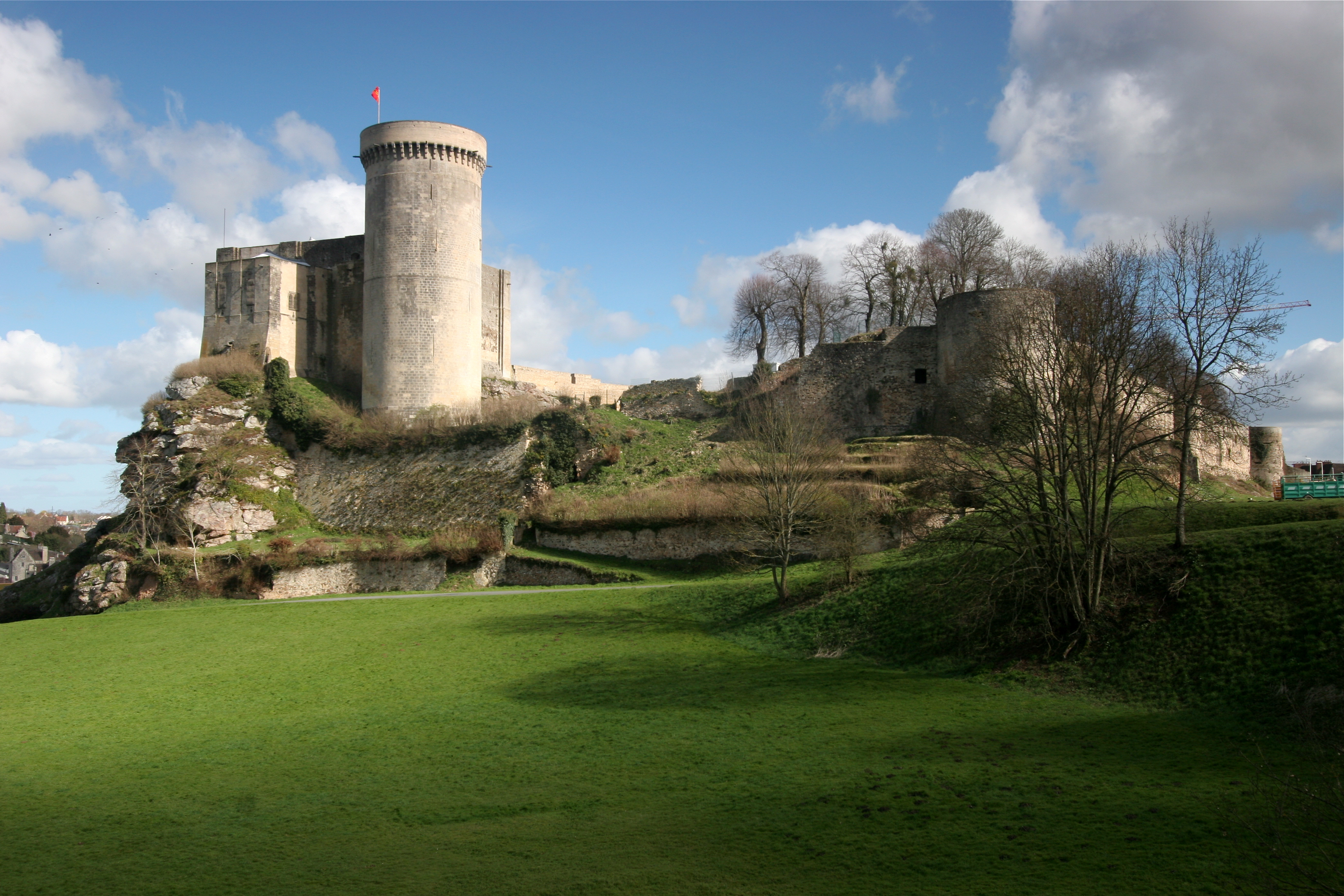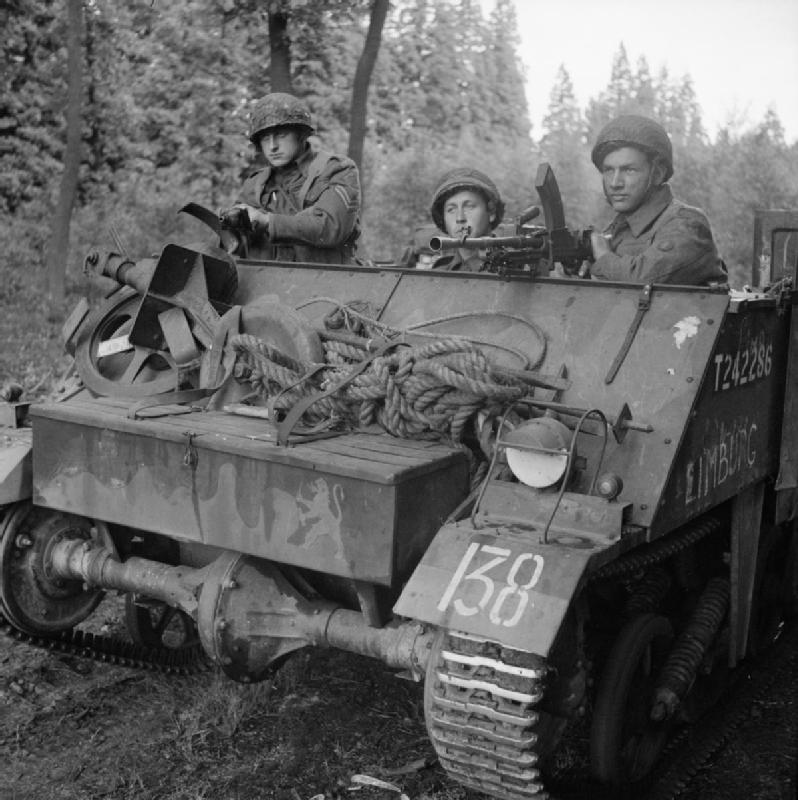|
II Canadian Corps
II Canadian Corps was a corps-level formation that, along with I (British) Corps (August 1, 1944, to April 1, 1945) and I Canadian Corps (April 6, 1943, to November 1943, and April 1, 1945, until the end of hostilities), comprised the First Canadian Army in Northwest Europe during World War II. Authorization for the formation of the corps headquarters became effective in England on January 14, 1943. Over March 4–12 the new Canadian corps was involved in Exercise Spartan, a large-scale training exercise in southern England. This exercise revealed weaknesses in the command of both the new Corps and of First Canadian Army, and this led directly to several changes in leadership over the subsequent year. The first commander of II Canadian Corps was Lieutenant-General Ernest William Sansom, effective January 15, 1943. Concerns over his leadership abilities and health caused Sansom to be replaced by Lieutenant-General Guy Simonds on January 29, 1944. Simonds led the corps for th ... [...More Info...] [...Related Items...] OR: [Wikipedia] [Google] [Baidu] |
Canadian Army
The Canadian Army () is the command (military formation), command responsible for the operational readiness of the conventional ground forces of the Canadian Armed Forces. It maintains regular forces units at bases across Canada, and is also responsible for the Army Reserve, the largest component of the Primary Reserve. The army is headed by the Commander of the Canadian Army and Chief of the Army Staff, who is subordinate to the Chief of the Defence Staff (Canada), Chief of the Defence Staff. The army is also supported by 3,000 civilian employees from the public service. The army was formed in 1855, as the Canadian Militia#Active militias, Active Militia, in response to the threat of the United States to the Province of Canada after the British garrison left for the Crimean War. This militia was later subdivided into the Permanent Active Militia and the Non-Permanent Active Militia. Finally, in 1940, an order in council changed the name of the Active Militia to the Canadian Arm ... [...More Info...] [...Related Items...] OR: [Wikipedia] [Google] [Baidu] |
3rd Canadian Division
The 3rd Canadian Division is a formation of the Canadian Army responsible for the command and mobilization of all army units in the provinces of Manitoba, Saskatchewan, Alberta and British Columbia, as well as Northwestern Ontario including the city of Thunder Bay. It was first created as a formation of the Canadian Corps during the First World War. It was stood down following the war and was later reactivated as the 3rd Canadian Infantry Division during the Second World War. The second iteration served with distinction from 1941 to 1945, taking part in the D-Day landings of 6 June 1944. A duplicate of the 3rd Canadian Division was formed in 1945 to serve on occupation duty in Germany and was disbanded the following year. History First World War The 3rd Canadian Division was formed in France in December 1915 under the command of Major-General Malcolm Mercer. Its members served in France and Flanders until Armistice Day. While with the 3rd Division at Ypres, Mercer became ... [...More Info...] [...Related Items...] OR: [Wikipedia] [Google] [Baidu] |
Falaise, Calvados
Falaise () is a Communes of France, commune in the Calvados (department), Calvados Departments of France, department in the Normandy (administrative region), Normandy Regions of France, region in northwestern France. The town is famous for being the birthplace of William I of England, William the Conqueror. It was also the centre of the area known as the Falaise pocket, the decisive engagement of the Operation Overlord, Battle of Normandy in the World War II, Second World War. Geography Falaise lies at the eastern edge of the Armorican Massif, and the town has rocky outcrops on its edges such as the 173 metre high Mount Myrrha. The commune is spread over an area of with a maximum altitude of and minimum of Flowing through Falaise are the river Ante (river), Ante and the river Trainefeuille, both tributaries of the river Dives (river), Dives. Falaise borders the area known as Norman Switzerland, Suisse Normande, on its eastern side. Land distribution According to the 20 ... [...More Info...] [...Related Items...] OR: [Wikipedia] [Google] [Baidu] |
Caen
Caen (; ; ) is a Communes of France, commune inland from the northwestern coast of France. It is the Prefectures in France, prefecture of the Departments of France, department of Calvados (department), Calvados. The city proper has 105,512 inhabitants (), while its Functional area (France), functional urban area has 470,000,Comparateur de territoire , INSEE, retrieved 20 June 2022. making Caen the second largest urban area in Normandy (administrative region), Normandy and the 19th largest in France. It is also the third largest commune in all of Normandy after Le Havre and Rouen. It is located northwest of Paris, connected to the South of England by the Caen (Ouistreham) to Portsmouth ferry route through the English Channel. Situated a few miles from the coast, the landing beaches, the ... [...More Info...] [...Related Items...] OR: [Wikipedia] [Google] [Baidu] |
VE Day
Victory in Europe Day is the day celebrating the formal acceptance by the Allies of World War II of Germany's unconditional surrender of its armed forces on Tuesday, 8 May 1945; it marked the official surrender of all German military operations. Most former Soviet countries, and some others, celebrate on 9 May, as Germany's unconditional surrender entered into force at 23:01 on 8 May Central European Summer Time; this corresponded with 00:01 on 9 May in Moscow Time. Several countries observe public holidays on the day each year, also called Victory Over Fascism Day, Liberation Day, or Victory Day. In the UK, it is often abbreviated to VE Day, a term which existed as early as September 1944, in anticipation of victory. History Adolf Hitler, the Nazi leader, had committed suicide on 30 April during the Battle of Berlin, and Germany's surrender was authorised by his successor, '' Reichspräsident'' Karl Dönitz. The administration headed by Dönitz was known as the Flensb ... [...More Info...] [...Related Items...] OR: [Wikipedia] [Google] [Baidu] |
Simonds
Simonds may refer to: People * D'Marcus Simonds (born 1997), American basketball player *Gavin Simonds, 1st Viscount Simonds (1881–1971), British judge *George Blackall Simonds (1843–1929), English sculptor *Major General George S. Simonds (1874–1938), U.S. Army officer *Lieutenant General Guy Simonds (1903–1974), Canadian Army officer * John O. Simonds (1913–2005), American landscape architect * Justin Simonds (1890–1967), Australian clergyman * Katherine Call Simonds (1865–?), American musician, singer, author, composer, social reformer *Kenneth Simonds (1935–2009), American businessman * Maria Simonds-Gooding (born 1939), Indian born Anglo-Irish artist * Merilyn Simonds (born 1949), Canadian author * Nathaniel Simonds (1775–1850), American politician * Ossian Cole Simonds (1855–1931), American landscape designer *Robert Simonds (born 1964), American film producer * William Simonds (author) (1822–1859), American author * William B ... [...More Info...] [...Related Items...] OR: [Wikipedia] [Google] [Baidu] |
51st (Highland) Division
The 51st (Highland) Division was an infantry Division (military), division of the British Army that fought on the Western Front (World War I), Western Front in France during the World War I, First World War from 1915 to 1918. The division was raised in 1908, upon the creation of the Territorial Force, as the Highland Division and later 51st (Highland) Division from 1915. The division's insignia was a stylised 'HD' inside a red circle. Early doubts about the division's performance earned it the nickname of "Harper's Duds" after the name of its commander, Major-general (United Kingdom), Major-General George Harper (British Army officer), George Harper although they would go on to gain a fearsome reputation with the Allies and Germans. The division was renamed the 51st (Highland) Infantry Division and fought during the World War II, Second World War as part of the Army Reserve (United Kingdom), Territorial Army after the Territorial Force was disbanded in 1920. In June 1940, the 51s ... [...More Info...] [...Related Items...] OR: [Wikipedia] [Google] [Baidu] |
Royal Netherlands Motorized Infantry Brigade
During the Second World War, the Royal Netherlands Motorized Infantry Brigade, later known as the Princess Irene Brigade () was a Dutch military unit initially formed from approximately 1,500 troops, including a small group guarding German prisoners-of-war, who arrived in the United Kingdom in May 1940 following the collapse of the Netherlands. Elements of this force became the nucleus of what was originally called the "Dutch Legion." Veterans of the Princess Irene Brigade who were members of the Dutch Army stationed at Wrottesley Park, Wolverhampton during World War II were given the Freedom of the City of Wolverhampton on 19 August 2006. History Formation Although augmented by conscription from overseas citizens from Canada, the United States, the Middle East, the Dutch West Indies (Netherlands Antilles and Suriname), South Africa and Argentina; the Dutch force grew very slowly as troops were detached for other duties i.e. the Commandos, the Navy etc. The unit never totall ... [...More Info...] [...Related Items...] OR: [Wikipedia] [Google] [Baidu] |
1st Belgian Infantry Brigade
The Independent Belgian Brigade (, ) was a Belgian and Luxembourgish military unit in the Free Belgian forces during World War II, commonly known as the Piron Brigade (''Brigade Piron'') after its commanding officer Jean-Baptiste Piron. It saw action in Western Europe and participated in the Battle of Normandy, the Liberation of Belgium, and fighting in the Netherlands over 1944-1945. Origins ''Brigade Piron'' originated in 1940, with hundreds of Belgian soldiers who had escaped to Britain, as had the Belgian Government. A new command of the Belgian Army, under Lieutenant-General Victor van Strydonck de Burkel, was created in Tenby on 25 May 1940, three days before the Belgian capitulation. Van Strydonck de Burkel became commander of the Belgian Forces in Great Britain in June 1940 and in the same month, a Belgian minister (Jaspar) called upon all Belgians to come to Britain to continue fighting. At the end of July 1940 there were 462 men in the Belgian Forces in exile; ... [...More Info...] [...Related Items...] OR: [Wikipedia] [Google] [Baidu] |
Allies Of World War II
The Allies, formally referred to as the United Nations from 1942, were an international Coalition#Military, military coalition formed during World War II (1939–1945) to oppose the Axis powers. Its principal members were the "Four Policemen, Big Four" – the United Kingdom, United States, Soviet Union, and Republic of China (1912–1949), China. Membership in the Allies varied during the course of the war. When the conflict broke out on 1 September 1939, the Allied coalition consisted of the United Kingdom, French Third Republic, France, and Second Polish Republic, Poland, as well as their respective Dependent territory, dependencies, such as British Raj, British India. They were joined by the independent dominions of the British Commonwealth: Canada, Australia, Dominion of New Zealand, New Zealand and Union of South Africa, South Africa. Consequently, the initial alliance resembled Allies of World War I, that of the First World War. As Axis forces began German invasion of ... [...More Info...] [...Related Items...] OR: [Wikipedia] [Google] [Baidu] |
4th Canadian Division
The 4th Canadian Division is a formation of the Canadian Army. It is currently responsible for Canadian Army operations in the Canadian province of Ontario and is headquartered at Denison Armoury in Toronto. The division was first created as a formation of the Canadian Corps during the First World War. During the Second World War the division was reactivated as the 4th Canadian Infantry Division in 1941 and then converted to armour and redesignated as the 4th Canadian (Armoured) Division. Beginning in 1916 the division adopted a distinctive green-coloured formation patch as its insignia. In 2013 it was announced that Land Force Central Area would be redesignated 4th Canadian Division. History First World War The 4th Canadian Division was formed in Britain in April 1916 from several existing units and others scheduled to arrive shortly thereafter. Under the command of Major-general David Watson, the Division embarked for France in August of that year where they served both ... [...More Info...] [...Related Items...] OR: [Wikipedia] [Google] [Baidu] |






